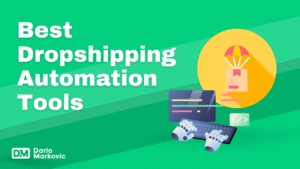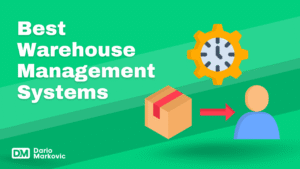A social media content calendar is a planning tool to help ecommerce businesses plan, schedule and post their social media content. It’s super important for consistency and engagement across platforms.
Benefits:
- Organisation: Keep track of upcoming posts and campaigns.
- Engagement: Get your audience interacting with your content.
- Alignment with Business Goals: Make sure your messaging supports product launches and promotions.
In this post you will learn how to make a social media content calendar ecommerce strategy for your online store.
What is a Social Media Content Calendar?
A social media calendar is a strategic tool used to plan, organize, and schedule content across multiple social media accounts.
It serves as a roadmap for managing your online presence, ensuring consistent and cohesive messaging that aligns with your brand’s goals. By mapping out content in advance, businesses and individuals can save time, maintain a steady posting content creation cadence, and avoid the last-minute scramble for ideas.
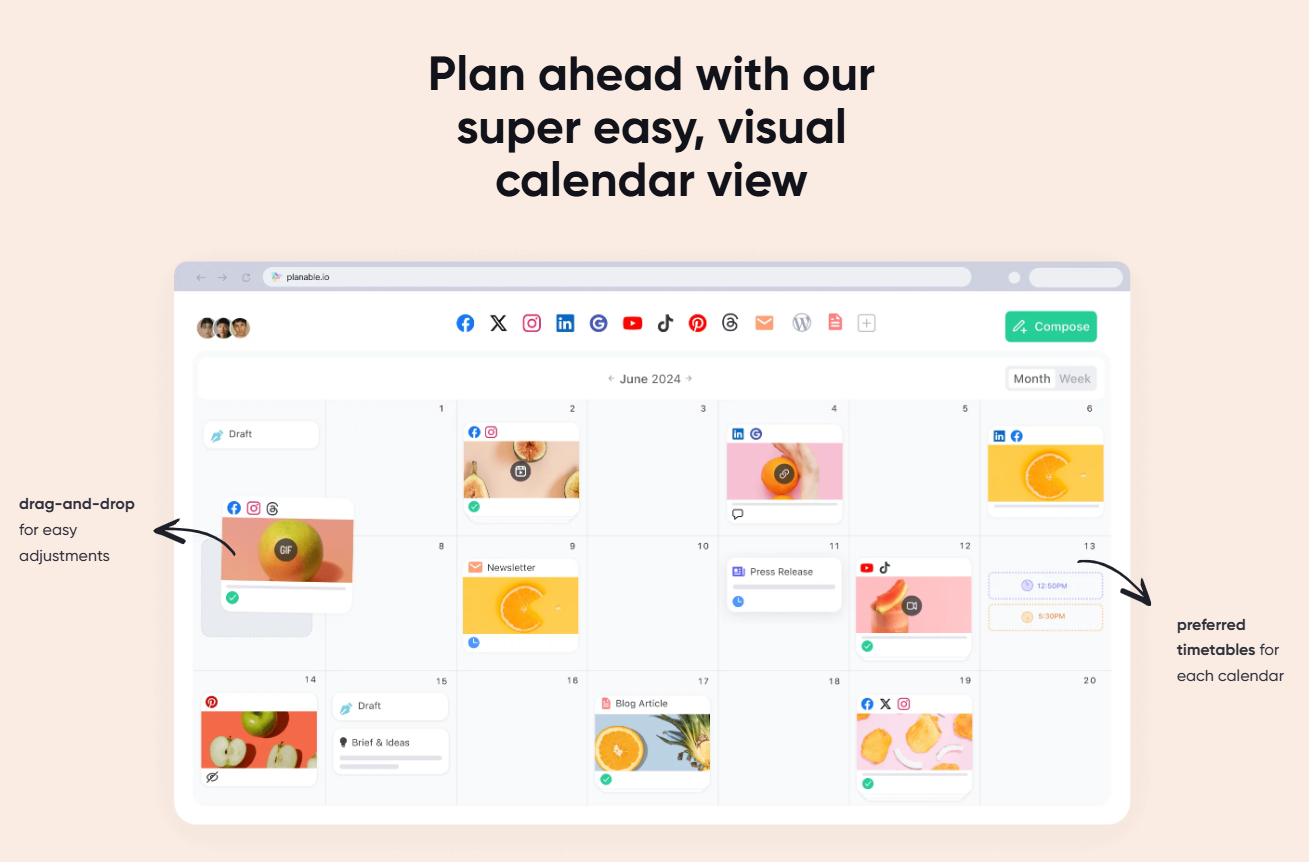
Key Elements of Social Media Content Calendar:
1. Platform-specific planning: Each social media platform caters to different audience demographics and types of content. A content calendar lets you create posts for Instagram, LinkedIn, Twitter, or TikTok, among others.
2. Types of Content: It helps in categorizing the types of social media posts, such as promotional content, educational articles, user generated content, or seasonal campaigns.
3. Timing and Frequency: Effective scheduling ensures that social media posts go live at the most optimal times for audience engagement, taking into account time zones and peak periods of activity.
4. Themes and Campaigns: A social media content calendar can be planned around themes, product launches, holidays, or events to keep the marketing message consistent.
5. Resource Allocation: Advanced planning of content creation allows teams to coordinate their efforts in graphic design, copywriting, and video production.
Why Is It Important?
Using a content calendar offers several schedule posts advantages:
| Consistency | Posting regularly builds trust with your audience and boosts algorithmic performance |
| Time Management | Streamlined planning reduces the daily workload and frees up room for creative brainstorming |
| Analytics and Refinement | It’s easier to track performance metrics when your posts are organized, enabling you to refine your strategy over time |
No matter whether you are a small business, a large corporation, or an influencer, a social media content calendar is an indispensable assistant in reaching your marketing objectives.
How to Make a Social Media Content Calendar Ecommerce Strategy? Step-by-Step Guide
A well-structured social media content calendar strategy is essential for ensuring consistent, targeted, and effective content creation delivery.
Here’s a step-by-step guide to crafting your strategy:
1. Set Goals and Objectives.
Be clear about your purpose before building your social media calendar.
Is your objective to raise brand awareness, generate traffic, increase involvement, or convert visitors into leads? All these aims would give a different type of content to develop and which social media platforms to maximize.
Having clear and measurable goals for your social media strategy will help you stay focused and accountable.
Here are some to consider:
Be Specific
What do you want to achieve, e.g. increase brand awareness or drive sales.
Use the SMART Framework
Make sure your goals are Specific, Measurable, Achievable, Relevant and Time-bound.
Now you have your audience and goals sorted, you have a solid foundation for a social media content calendar that aligns with your ecommerce business.
2. Know your Audience
Knowing your audience is key to content planning. Understanding their likes, behaviors and pain points will help you create content that speaks to them.
Here are some to consider:
Do Market Research
Use surveys, social media post insights and analytics tools to gather data about your audience.
Create Buyer Personas
Make detailed profiles of your ideal customers including demographics and interests.
3. Content Types and Formats
When making a social media content calendar, choosing the right content types and formats is key to getting your audience engaged.
Here are some content types that work well for ecommerce businesses:
Content Types
| Examples | ||
| Product Showcases | Use high quality images or videos to showcase individual products. Show their features, benefits and usage scenarios to attract buyers. | Promotional campaigns, Discounts |
| Testimonials | Share customer reviews and success stories. Real life experiences build trust and get other customers to buy. | Tips |
| User-Generated Content (UGC) | Get your customers to share photos or videos of themselves using your products. This gives you authentic content and community engagement. | Engaging content ideas |
To get the most engagement, try these:
Formats
- Images: Use bold visuals that reflect your brand. Infographics can present complex information in a simple and attractive way.
- Videos: Create short videos of product usage or behind the scenes of your business. Videos have higher engagement than static images.
- Stories: Use platforms like Instagram or Facebook Stories to share ephemeral content. This format allows you to connect with your audience in real time and have interactive polls or Q&A sessions.
Mixing these content types and formats will keep your audience interested and promote your ecommerce products. Varying your social media posts will make sure different parts of your audience find value in what you post.
4. Planning and Scheduling
Making a social media content calendar requires a methodical approach to planning and scheduling.
Follow these steps:
Choose a Template or Tool
- Use templates from Hootsuite or HubSpot for a pre-built layout.
- Use project management tools like Monday.com or Trello for flexibility and team collaboration.
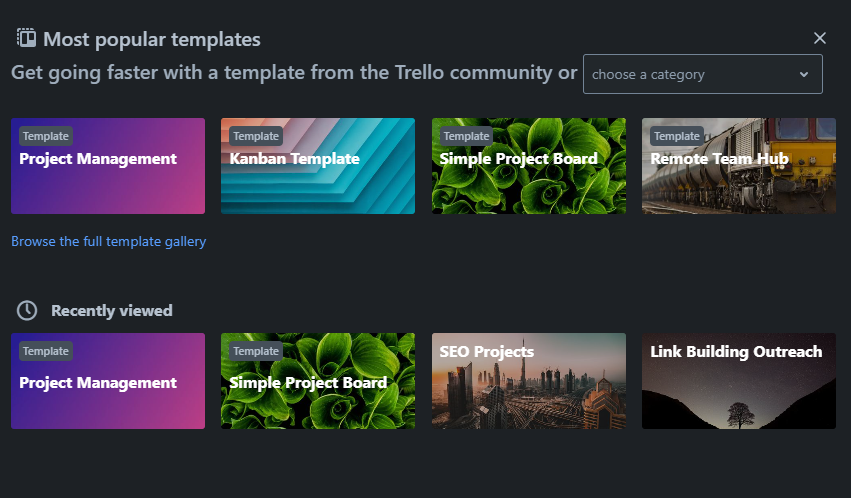
Define Your Content Pillars
- What are your brand pillars, e.g. product showcases, customer testimonials or educational content.
- This will give you consistent post ideas for your overall strategy.
Brainstorm Content
- List of potential posts for each pillar.
- Timely (seasonal promotions) and evergreen (always relevant) content.
5. Set Dates and Times
- Assign each post to a date on your calendar.
- Research best times to post on each platform when your audience is most active.
6. Create Visuals and Copy
- Write captions that engage your target audience and encourage interaction.
7. Schedule with Tools
- Use tools like Buffer to auto post.
- Saves time and ensures consistency of posting frequency.
Best Practices for Scheduling:
- Analyze Audience Behaviour: Use analytics to see when your audience is most active. Post during peak times to get maximum visibility.
- Be Flexible: Having a structured schedule is important but allow for changes based on current trends or real time events.
- Regular Reviews: Review scheduled posts regularly to refine timing and content over time.
Following these steps will make your content planning and scheduling better and more aligned to your business goals.
8. Monitoring and Adjusting
Tracking key metrics is important to measure the success of your social media content. Monitoring performance will help you see how well your content is resonating with your audience.
Focus on these metrics:
- Engagement Rates: Likes, shares, comments and overall interactions to see how interested your audience is.
- Conversion Stats: See how many people take action, e.g. buy or sign up for a newsletter.
Using analytics tools will give you valuable insights into your audience’s behaviour. Platforms like Google Analytics, Facebook Insights and Instagram Analytics will show you trends and patterns in engagement.
To improve future posts and campaigns:
- High Performing Content: Find out what types of posts get the most engagement or conversions. This could be product showcases or user generated content.
- Adjust Content Strategy: Based on performance data, pivot your content strategy to focus on what works. If testimonials get more engagement, increase the frequency of them.
- Try Different Things: Experiment with different content formats or posting times to see what works best for your audience.
Being proactive in monitoring and adjusting will keep your content relevant and effective for your e-commerce business.
Social Media Calendar Tools to Consider
1. Hootsuite
A comprehensive platform that supports scheduling, monitoring, and reporting across multiple social media channels. It’s user-friendly and ideal for teams and solopreneurs alike.
2. Buffer
Known for its simplicity, Buffer offers a straightforward scheduling tool with analytics to measure engagement and improve future posts.
3. Trello
Project management tool, can be adapted as social media calendar, offering visual boards and integration with other tools.
4. Later
Especially popular among Instagram users, Later’s visual calendar and drag-and-drop functionality make planning aesthetically focused content a breeze.
5. CoSchedule
Ideal for marketing teams, CoSchedule integrates social media planning with other marketing activities, ensuring alignment across campaigns.
Social Media Calendar Template
It provides a structure to give birth to the idea of organizing, scheduling, and planning your upcoming social media posts. There is no one-size-fits-all approach here, and you will have to shape yours in accordance with the particulars of your campaign.
Buffer’s content calendar template is strategically versatile to bring in several social media accounts. Visualization of content is away in separate weeks or months with a global overview through each of the pages where the content will appear. One calendar, one strategy toward social media across multiple channels.
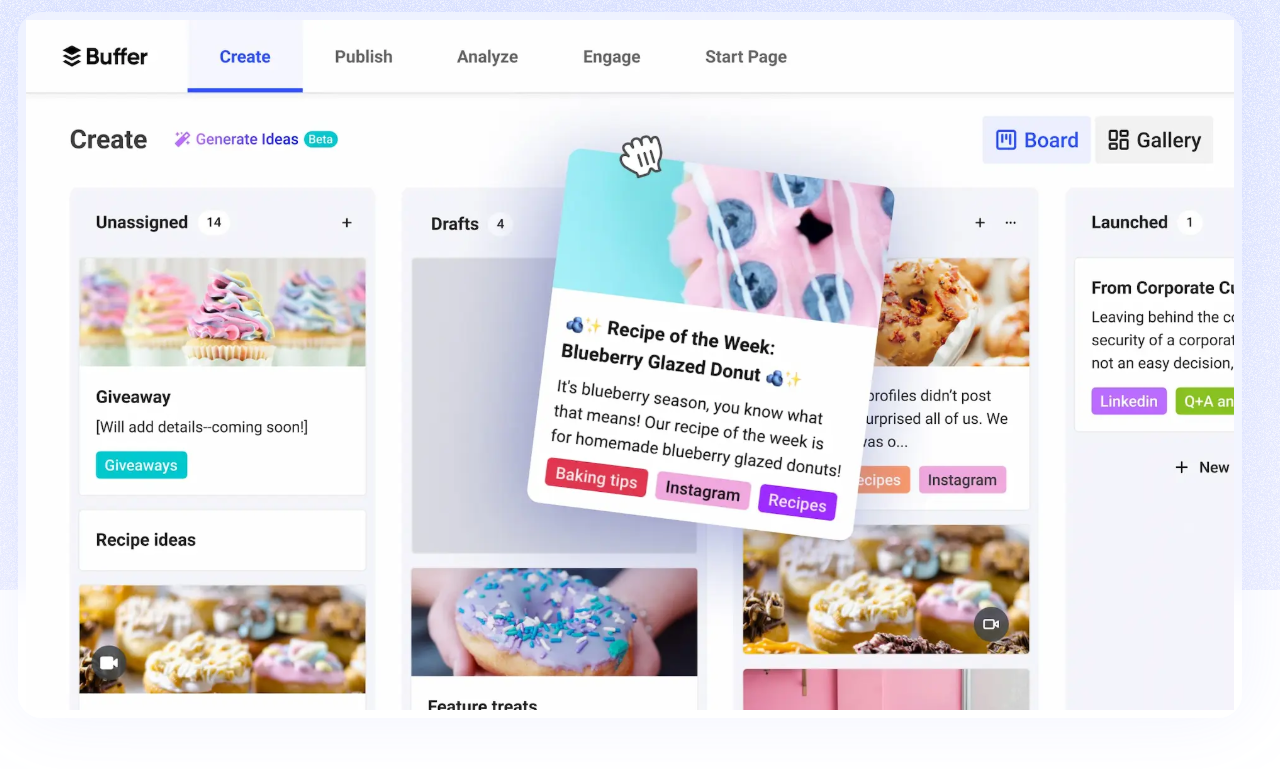
Benefits of Social Media Content Calendars
Social media content calendars are essential tools for businesses and marketers aiming to maintain a consistent and effective online presence.
Here are the main benefits they provide:
1. Improved Organization and Planning
A content calendar helps you visualize your social media strategy ahead of time. You can schedule posts around important dates, holidays, campaigns, and product launches, ensuring your messaging aligns with your overall marketing goals. This organization minimizes last-minute stress and mistakes.
2. Consistent Posting Schedule
Regularity is key to building and sustaining engagement on social media. A calendar helps you post consistently, keeping your audience engaged and boosting the likelihood of appearing in their feeds.
3. Enhanced Collaboration
For teams, content calendars facilitate better communication and collaboration. Team members can easily view upcoming content, deadlines, and who is responsible for each task. This transparency reduces miscommunication and prevents duplicated efforts.
4. Content Quality and Variety
By planning in advance, you can ensure a diverse mix of content types, such as educational posts, promotional offers, user-generated content, and trending topics. This variety keeps your audience interested and engaged.
5. Effective Use of Analytics
Content calendars allow you to review past posts, analyze their performance, and identify trends. By tracking what resonates with your audience, you can refine your strategy and focus on what works best.
6. Time and Resource Efficiency
Creating and scheduling posts in batches saves time compared to posting daily. This efficiency allows you to dedicate more time to other important tasks like community management and campaign optimization.
7. Proactive Management of Crisis and Changes
A calendar provides flexibility. You can modify your planned posts to respond to unexpected news or shifts in your industry. This proactive approach ensures your content stays relevant and sensitive to current events.
8. Increased ROI on Marketing Efforts
With a well-structured approach, you can maximize the return on your marketing investments.
Using a social media content calendar is more than just a productivity hack—it’s a cornerstone of an effective digital marketing strategy. Whether you’re a solopreneur or part of a larger team, implementing a calendar can bring significant benefits to your social media efforts.
Being Flexible with Your Content Calendar
Flexibility is key to a good content calendar. Balancing planned content and real time responsiveness will keep you relevant.
Try these:
- Stay Informed: Regularly check industry news and social media trends to adjust your content.
- Interact with Your Audience: Listen to audience feedback and reactions. This will guide your immediate content updates or new posts.
- Plan for Spontaneity: Schedule time slots for posts that address current events or trending topics.
Having a structured social media calendar plan while adapting will give you both engagement and brand authenticity.
My Summary
Creating a social media content calendar can significantly benefit ecommerce businesses in 2025.
It helps streamline your content planning, maintain consistency, and align your social media activities with your overall business goals. By setting clear objectives, understanding your target audience, scheduling posts, and analyzing results, this approach provides a structured way to enhance your online visibility.
I’ve witnessed how a thoughtfully designed content calendar can revolutionize social media campaigns.
By staying organized yet adaptable, you can produce engaging content that truly connects with your audience and delivers real results. Follow these guidelines, and you’ll be equipped to make social media a key element of your ecommerce success.
Trust my insights—I’ve been in your shoes, and this method is effective.
Let’s aim to make 2025 your most successful year!
Frequently Asked Questions
How do I be flexible with my content calendar when trends happen?
Balancing planned content and real time responsiveness means being open to adjust your calendar to industry trends or audience feedback.
Why do I need to monitor performance for my content?
Track engagement rates and conversion stats to see how your content is performing. Use analytics to refine future posts and campaigns to improve results.
How do I schedule my posts on social media?
Best practices for scheduling are to use a content calendar template or project management tool to plan ahead and post when your audience is most active. This will give you more reach and engagement.
What content should I include in my social media strategy?
Different content types that work for e-commerce businesses are product showcases, customer testimonials and user generated content (UGC). Choose formats like images, videos or stories that work for your audience.
How do I find my target audience for content planning?
Knowing your audience means researching demographics, interests and behaviours to tailor your content. This can be done through surveys, social media analytics and customer personas.

